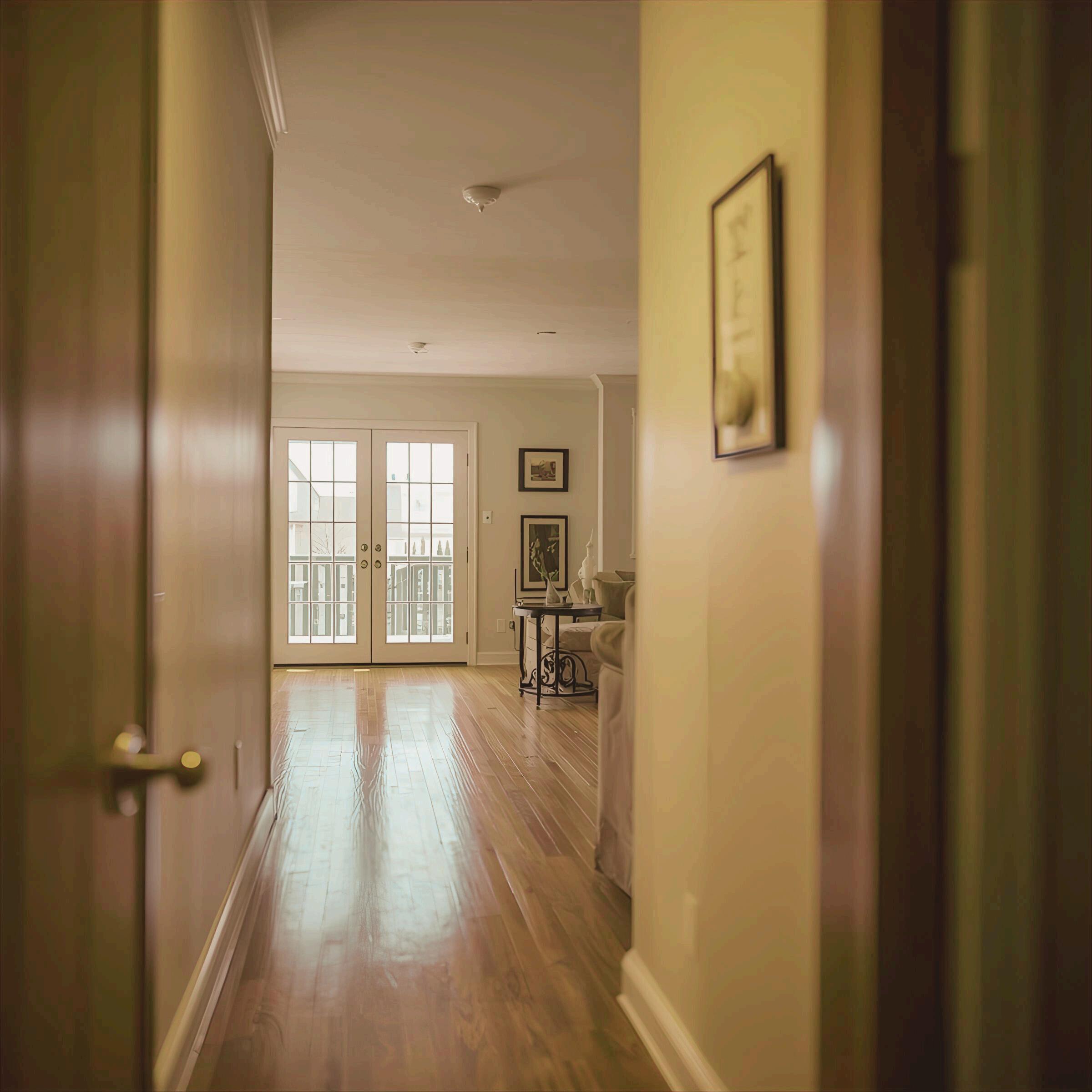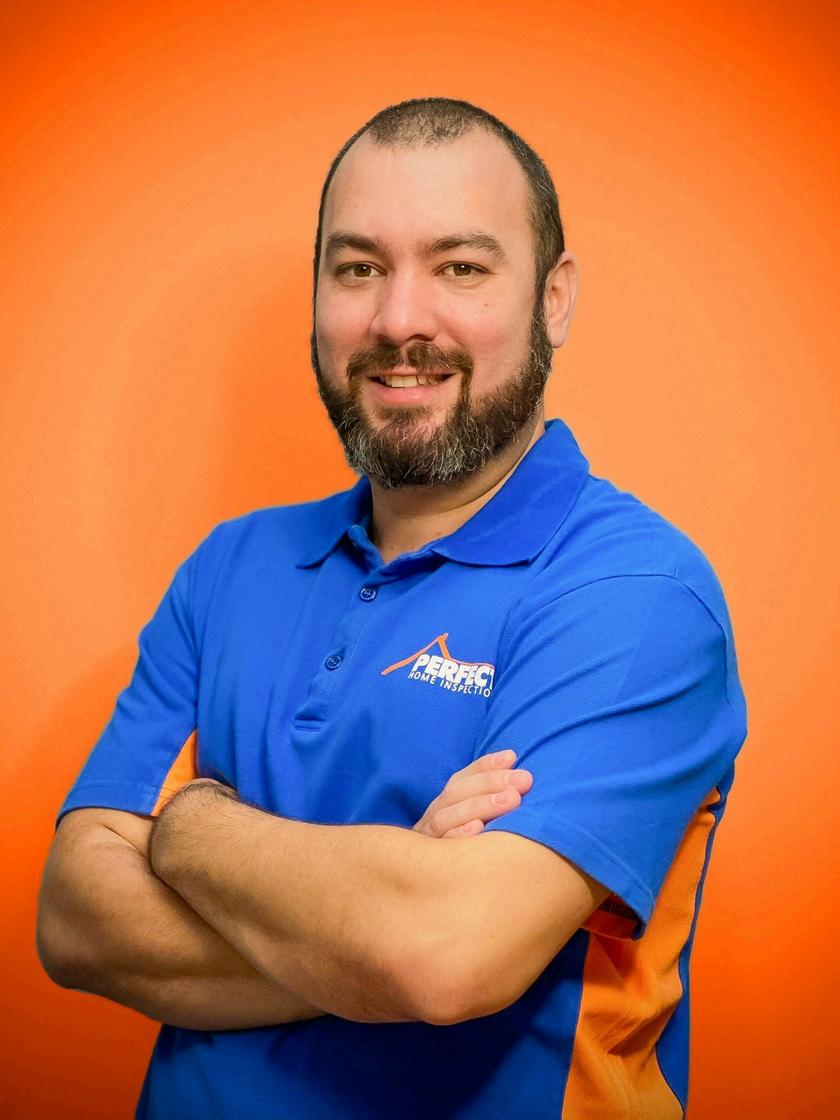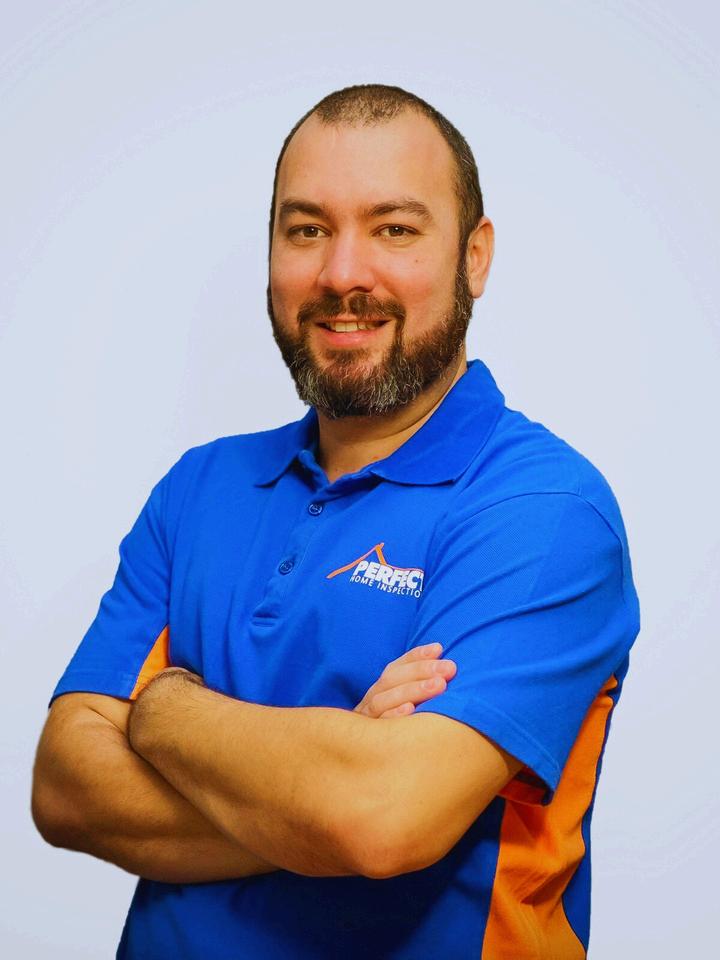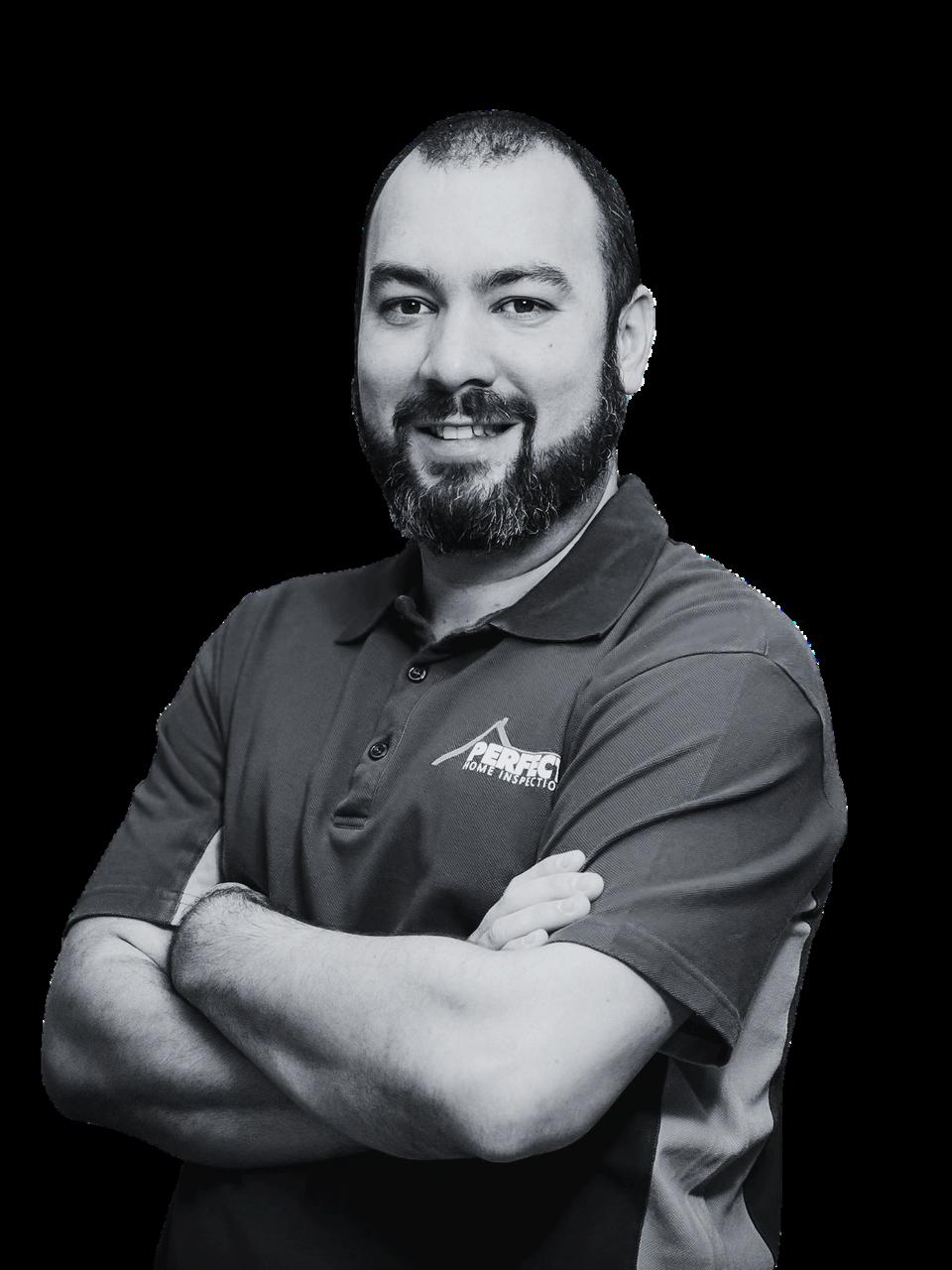

HOMEINSPECTION ANDRESIDENTIAL SAFETY
A Pillar of National Infrastructure and Public Health in the U.S.
HOMEINSPECTION ANDRESIDENTIAL SAFETY
A Pillar of National Infrastructure and Public Health in the U.S.
My motivation stemmed from a deep respect for housing as a foundation of public safety and quality of life.
The home inspection industry acts as a crucial risk mitigation andregulationtoolwithin the
US housing market It verifies structural safety, habitability, and complianceacrossnearly5million annualrealestatedeals.Asfederal agencies push initiatives on housing affordability, environmental justice, and disaster recovery, licensed home inspectors serve as frontline agents of public safety and the integrity of infrastructure. Their dual role as technical inspectors and small business owners places them at the intersection of real estate, environmental health, and laborforcemodernization
Legal and Regulatory Importance
The legal structure for home inspection in the U.S. is layered, complex, and closely linked to housing finance, safety enforcement, and consumer protection systems Federally, home inspections are integrated into housing programs managed by agencies such as HUD, FHA, VA, and USDA Rural Housing Service. These agencies require inspections for federally backed mortgageeligibilityandinsurance, ensuring homes meet basic safety, habitability, and structural standards

rigor but also its alignment with national interests.
HUD’s Minimum Property Standards, for example, set a detailedchecklistinspectorsmust follow when assessing FHAinsured properties. These standards aim to protect both borrowers and federal insurance funds by identifying issues with electrical systems, plumbing, roofs, foundations, and health hazards like mold and lead paint Inspectors’ documentation helps underwriters decide on mortgage insurance approvals, directly linking their work to federal financialriskmanagement
AfranioCorreiadaSilva What sets Afranio Correia da Silva’s professional practice apart is not only its technical
LEG REG IMP

State regulations formalize the profession licensing requirements 2025,35statesmandate issued by professional These generally completing accredited courses, passing the National Home Inspector Examination (NHIE), having liability and errors-andomissions (E&O) insurance, and completing ongoing education For instance, the Illinois Department of Financial and Professional Regulation (IDFPR) enforces strict licensing, including audits and complaint procedures These laws protect consumers and ensure market integrity
Home inspectors are also guided by standards from professional groupslikeInterNACHIandASHI Although voluntary, these standardsarewidelyacceptedas benchmarks of good practice. InterNACHI’s Standards of Practice and Code of Ethics specify the scope of visual, noninvasive inspections and the need for impartiality Violations canresultinlossofmembership, insurance issues, or legal consequences
serve as witnesses, with their assessments affecting liability and compensation decisions This gives inspectors a quasiregulatoryrole,recognizingthem as key figures in property conditionandriskassessments
Municipalities also involve inspectors in enforcement by accepting third-party inspection reportsinsteadofofficialbuilding code checks, especially where staffing is limited This approach broadens regulatory oversight while maintaining safety standards. In emergencies like hurricanes or wildfires, inspectors are authorized to evaluate safety and certify properties for re-occupancy duringfederalresponseefforts
Finally,theprofession’slegalrole extends to statutes such as RESPAandTILA,whichmandate the disclosure of property conditions.
guardians of legal compliance andtrustinresidentialrealestate
Construction and building inspectors, which include home inspectors, numbered approximately 142,600 positions in 2023, with a median annual wage of $72,120. Their employment is expected to remainsteadythrough2033,with approximately 15,000 yearly openings likely due to retirements or transfers, underscoring the ongoing importanceoftheindustry
PUBLIC HEALTH & ENVIRONMENTAL HAZARD MITIGATION
The connection between home inspection and public health has become a nationally significant area, initially focusing mainly on structural observations Home inspections now also identify environmental risks that directly affect respiratory health, neurological development, and long-term disease risk Federal and state agencies are increasingly relying on home inspectors to identify hazardous living conditions, particularly in underserved communities and olderhousingstock
Radon gas, recognized by the U.S. Environmental Protection Agency (EPA) as the secondleading cause of lung cancer, highlightsthehigh-stakesnature of residential environmental hazards Home inspectors are well-suitedtoaddressthisthreat byperformingradontestsduring property assessments The EPA’sradonzonemappingrelies on anonymized testing data often provided by licensed inspectors,makingthemindirect contributors to federal environmental health data In radon-prone states like Illinois and Pennsylvania, inspectors are vitalforcommunityhealth
Likewise, inspectors play a key role in detecting black mold, lead-based paint, asbestos, and VOCs, hazards more common in older homes and low-income neighborhoods The US Department of Housing and Urban Development (HUD) links exposure to these contaminants with asthma, cognitive delays in children, and more emergency roomvisits
According to the Centers for Disease Control and Prevention (CDC), about 40% of asthmarelated ER visits are due to poor housing conditions By uncovering these risks before sale or during maintenance, inspectors enable timely repairs, reducing health system strain andhumansuffering
Home inspection companies offering environmental testing support HUD’s Healthy Homes Initiative and the CDC’s Environmental Public Health Tracking Program These firms do more than report; they triage, document, and help facilitate public health actions at the householdlevel Theirreportsare used not only by buyers and sellers but also by public health agencies, legal aid groups, and codeenforcementagencies
In disaster recovery scenarios, inspectors play a critical role After hurricanes, wildfires, and floods, they document damage, identify mold growth, test indoor air quality, and help determine eligibility for re-occupancy FEMA and local emergency agencies now accept third-party inspections as proof for grants and insurance claims For example, after Hurricane Ian in Florida, thousands of homes needed third-party inspections to qualify for FEMA assistance, highlighting the inspector’s role incrisisresilience
The digitization of inspection methods,includingtimestamped photos, remote monitoring, and real-time report sharing, further increases their public health impact.
These tools enhance transparency, support legal actions, and enable agencies to identify properties requiring systemic intervention For instance, inspectors who send anonymized environmental readings to public health departments help map diseases relatedtohousingconditions
Home Inspectors serve as decentralized public health agents who support agencies like the CDC, HUD, EPA, and FEMA. Their work helps save lives, reduce chronic illnesses, and improve housing quality, leading to long-term healthcare savings and better national health outcomes Their daily tasks, aligned with federal public health priorities, make them key players in both prevention and environmentaljustice
The environmental role of home inspection is fundamental to preventive health Americans spendapproximately90%oftheir time indoors, where pollutant concentrations can be 2 to 5 times higher than outdoors Indoor environmental exposures, radon, mold, lead paint, and volatile organic compounds are linked to asthma exacerbations, neurological development issues, andchronicillness.
According to the EPA and CDC, an estimated 25 million Americans have asthma, including over 5 million children; asthma-related hospital care costs exceeded $14 7 billion in 2008, with 4 million asthma attacks and nearly 4,000 deaths annually. Roughly 40% of asthmarelated ER visits are attributable to substandard housing conditions like mold or pests.
Workforce
Development & Entrepreneurship
The home inspection industry plays a vital role in developing the US labor force and expanding entrepreneurship, especially in skilledtradesandinfrastructureservices Asthe national economy works to address talent shortages in construction, environmental diagnostics, and code enforcement, the inspection profession offers a scalable, accessible, and sustainable pathway to middleclasseconomicparticipation Withstartupcosts under$10,000andmedianannualwagesabove $63,000, home inspection is one of the most achievableentrypointsintothebroadersystem ofhousinginfrastructureservices
AccordingtotheU.S.BureauofLaborStatistics (BLS),employmentinbuildingandconstruction inspectionisexpectedtogrowsteadilyoverthe next decade However, industry groups like InterNACHI estimate that unmet demand is much higher, especially in areas experiencing population growth, post-disaster rebuilding, and an aging housing stock. This labor gap presents both a market opportunity and a national challenge, exacerbated by the current workforce’s demographics: nearly 48% of certified inspectors are over 50, creating an impending knowledge transfer and retirement cliff
Economic Impact of Home Inspection Services
The economic contribution of the US home inspection industry is significant and multifaceted, encompassing both direct revenue generation and downstream cost savings for publicandprivatestakeholders Accordingtothe AmericanSocietyofHomeInspectors(ASHI),the national average cost of a general home inspection in 2023 was approximately $436, with pricing influenced by geographic region, square footage, and complexity of services When multiplied across an estimated 5 million annual residential real estate transactions, the home inspectionsectorgenerateswellover$2billionin directservicerevenueseachyear
Beyond general inspections, value-added services including radon testing ($150–$250), mold sampling ($300–$1,000), sewer scopes ($250–$400), and infrared diagnostics ($100–$300) createlayeredrevenueopportunitiesand increase the technical footprint of inspection firms.Theseservicesalsoenhancehousingsafety and reduce public health burdens, particularly in jurisdictionsprioritizingenvironmentaljusticeand disasterpreparedness

ECONOMICIMPACTOF HOMEINSPECTION SERVICES
Inspection fees are both market-aligned and accessible With startup costs under $10,000 and median professional wages exceeding $72,000 per year (Bureau of Labor Statistics, 2024), the industry offers scalable economic inclusion through credentialed selfemployment. The affordability of inspection services to consumers ensures strong demand, while the viability of inspection firms supports SBA-backed entrepreneurship, particularly amongveterans,minorities,andimmigrants
Inpost-disasterrecovery,homeinspectorsplay a critical economic role by enabling timely damage assessments that unlock FEMA and insurance disbursements For instance, FEMAauthorized inspections typically cost less than $100 per property under federal subsidy yet they expedite access to tens of thousands of dollarsinassistancepereligiblehousehold This high return on modest inspection fees demonstratestheindustry’sleverageindisaster economicsandresilienceplanning.
Inspection-generatedsavingsarealsosubstantial across housing stakeholders. According to HUD, buyerswhoreceivepre-purchaseinspectionsare significantly less likely to face costly post-sale repairs or legal disputes Inspection-driven risk reduction also lowers default probabilities for FHA- and VA-backed mortgages, protecting federal loan portfolios and reducing taxpayer liability
In aggregate, the U.S. home inspection industry operates as a multi-billion-dollar ecosystem that integrates workforce development, environmental diagnostics, and public interest compliance
The goal is to develop an ecosystem where inspection is both a business and a community service.
While the BLS projects small net growth in inspector roles through 2033, the profession faces significant replacement demand, with 15,000 annual openings due to retirements and turnover. Inspectors earn a median yearly wage of $72,120, exceeding the national average of $49,500 for all occupations. This places home inspection firmly within a professional services tier, offering a sustainable income and entrepreneurial opportunities.
GuestExpert
TechnologicalTransformation& PredictiveInfrastructure
The home inspection industry is experiencing a transformation driven by the adoption of technology, data analytics, and digital services Previously relying on clipboard checklists and handwrittenreports,moderninspectionpractices now combine artificial intelligence (AI), mobile diagnostics, cloud computing, and remote sensing tools This change improves accuracy and efficiency while repositioning home inspectors as key contributors to national data infrastructureandpredictiveriskmanagement
Technologies such as thermal imaging, moisture sensors,anddroneinspectionsallowdetectionof hidden safety issues like mold or electrical overheating,withover70%ofcertifiedinspectors usinginfraredtoolsaccordingtoInterNACHI
AI-powered platforms help predict structural vulnerabilities using large datasets, aligning inspection work with FEMA’s hazard mitigation andHUD’shealthriskreductionstrategies.Digital reporting software facilitates rapid, interactive delivery of findings, supports code enforcement, andbuildslongitudinalhousingdatasets
Moreover, inspectors increasingly integrate with PropTech and CRM platforms from firms like Zillow and Compass, embedding inspection insights into real estate analytics, renovation planning, and buyer tools. This repositions inspectors as proactive risk advisors under an “Inspection-as-a-Service” (IaaS) model, offering long-term value beyond individual transactions and contributing to national housing data infrastructure
StrategicPolicyAlignment
Home inspection aligns with multiple federal policy frameworks Under the Housing Supply Action Plan, inspectors verify compliance with energy efficiency, health standards, and code requirements, ensuring FHA, VA, and USDAbacked housing provides minimum habitability andlongevity.
Firms serve as extensions of public safety services, supporting FEMA's Emergency Support Function #3 during emergencies In 2022 alone, more than 120,000 homes across Florida, Louisiana, and California received clearance for FEMAaidthroughlicensedthird-partyinspection reports, enabling quick occupant re-entry and helping to reduce the incidence of fraudulent claims
HUD'sHealthyHomesInitiativeisfundedthrough multi-million-dollar grants, including $125 million allocated to improve over 26,000 homes and $5 million for radon testing in high-risk public housingunits Inspectorsimplementthesegrants by delivering environmental risk assessments, remediation verification, and data collection necessaryforfundingcompliance
At the state level, radon testing mandates, including those in Illinois, contribute to the EPA's national surveillance projects Licensing systems serve as both consumer protection and federal data collection channels, increasing their impact fromlocaltonationallevels.
ExpertProfile:
AFRANIOCORREIADASILVA
Afranio Correia da Silva exemplifies the professional, technical, and civic standards thatdefinethemodernU.S.homeinspection industry. As the founder and principal inspector of Perfect Home Inspection LLC, based in Illinois, Mr Silva has emerged as a nationally recognized leader in advancing residential safety, public health compliance, and small business innovation With over a decade of field experience, multiple certifications, and a growing portfolio of impactful residential assessments, his contributions establish him as a model for immigrant-led infrastructure entrepreneurshipintheUnitedStates
Afranio Correia da Silva holds professional licensure from the Illinois Department of Financial and Professional Regulation (IDFPR) and maintains credentials through the International Association of Certified Home Inspectors (InterNACHI) His technical expertise encompasses radon testing, sewer scope evaluations, infrared thermal imaging, mold assessments, and combustible gas diagnostics, making his firm a comprehensive solutions provider across environmental, structural, and regulatoryareas

Under his leadership, Perfect Home Inspection LLC has served a diverse range of clients across suburban and urban housing markets, often in high-risk environmental zones and underserved communities. His reports have been used for FHA and VA loan compliance, legal dispute resolution, and disaster recovery documentation. In doing so, Afranio Correia da Silva has directly supported the missions of HUD, FEMA, and the EPA by ensuring housing transactions adhere to federal health and safety standards.
What sets Afranio Correia da Silva’s professional practice apart is not only its technical rigor but also its alignment with national interests. He has mentored aspiring inspectors, introduced digital platforms for streamlined reporting, and advocated for inspection literacy among first-time homebuyers, especially within immigrant and minority communities. These efforts reflect a dual commitment to workforce development and consumer protection, reinforcing his reputation as both a business innovator and a public interest advocate.
A CONVERSATION WITH AFRANIO CORREIA DA SILVA Expert
In this section, Human Capital Career Trends Magazine features a curated interview with Mr. Afranio Correia da Silva, whose entrepreneurial leadership in the home inspection industry holds national importance for housing infrastructure, public safety, and workforce inclusion.
Whatmotivatedyouto enterthehome inspectionprofessionin theUnitedStates?
My motivation stemmed from a deep respect for housing as a foundation of public safety and quality of life Having worked in various construction and technical roles in Brazil, I realized that homeinspectioninthe U.S. presented a unique opportunity to combine engineering precision with public service. The profession allows me to protect families, empower homebuyers, and support a healthier housing market, all through technical diagnostics and complianceexpertise
HowdoesPerfectHome InspectionLLCdiffer fromtraditional inspectioncompanies?
Our firm blends advanced diagnostic technology,such as infrared thermography, sewer scope analysis, and radon detection,with bilingual service and culturally sensitive client education. We go beyond basic compliance to offer environmental risk mitigation and personalized reporting that helps clients make fully informed decisions. That combination of technology, transparency, and trust defines our value
Basedonyour experience,whatare themostcommon healthorsafetyhazards overlookedin residentialinspections? Moisture intrusion, causing mold, unvented combustion appliances, and high radon levels are among the most frequently missed hazards, especially in older homes These issues have a significant impact on respiratory health, particularly in children andolderadults.Many are hidden and need specialized tools to detect. Our firm prioritizes these assessments and guides clients on remediationstepsthat meet both legal and healthstandards
Howdoyouseeyour workinthecontextof nationalinterests?
Every inspection contributes to a safer, healthier, and more transparent housing system Whether preventing legal issues, enabling FHA loan approval, or detectingleadpaintin pre-1978 homes, our work supports public infrastructure on a larger scale I see myself as a local business owner playing a role in advancing housing safety and environmental justice atanationallevel
Q&A A CONVERSATION WITH AFRANIO CORREIA DA SILVA Expert
In this section, Human Capital Career Trends Magazine features a curated interview with Mr. Afranio Correia da Silva, whose entrepreneurial leadership in the home inspection industry holds national importance for housing infrastructure, public safety, and workforce inclusion.
05 06 07
Whatstrategieshave youusedtopromote workforcedevelopment andinclusioninyour company?
I’ve trained junior inspectors from diverse backgrounds, includingveteransand immigrants, through mentorship and onthe-job shadowing. We also partner with local vocational schools and provide bilingual materials to reach a broader range of communities Workforce development isn’t just about economics; it’s about building trust, knowledge, and access in underserved areas
Howdoyouincorporate newtechnologiesinto yourdailywork?
We use AIenhanced inspection software, digital moisture meters, and thermal imaging to improve diagnostic accuracy. These tools enhance safety, expedite reporting, and make reportsmoreprecise and more useful We’re also testing drone inspections for roofs and exploring remote inspections for clients in rural or disaster-hitareas.
Whatisyourlong-term planforPerfectHome InspectionLLC?
I aim to grow the company into a regional model that combines diagnostics, education, and workforce training. The goal is to develop an ecosystem where inspection is both a business and a community service. I aim to establish a legacy of safety, empowerment, and innovation within America's housing system.
CONCLUSION
The home inspection industry has developed into a multidisciplinary field of nationalstrategicimportance,connectingpublichealth,infrastructureresilience, housing affordability, and workforce modernization This change is not just functional but also structural: inspectors today serve as data providers, public safety advocates, workforce developers, and economic drivers Through their technicalassessments,theyhelpreducelawsuits,preventenvironmentalhazards, and support safe housing transactions, impacts that spread across financial markets,publichealthsystems,andcommunitydevelopmentefforts
References
BureauofLaborStatistics.(2024).OccupationalOutlookHandbook:ConstructionandBuildingInspectors.U.S. DepartmentofLabor https://wwwblsgov/ooh/construction-and-extraction/construction-and-buildinginspectorshtm
BureauofLaborStatistics (2024) OccupationalEmploymentandWageStatistics:ConstructionandBuilding Inspectors US DepartmentofLabor https://wwwblsgov/oes/current/oes474011htm
CentersforDiseaseControlandPrevention (2023) AsthmaintheUS NationalCenterforHealthStatistics https://wwwcdcgov/nchs/fastats/asthmahtm
CentersforDiseaseControlandPrevention (2022) EnvironmentalPublicHealthTrackingProgram https://wwwcdcgov/nceh/tracking/ EnvironmentalProtectionAgency.(2023).ACitizen’sGuidetoRadon.https://www.epa.gov/radon/citizens-guideradon-health-risk-information
EnvironmentalProtectionAgency (2023) IndoorAirQualityandHealth https://wwwepagov/indoor-air-qualityiaq
FederalEmergencyManagementAgency (2023) EmergencySupportFunction#3–PublicWorksand EngineeringAnnex https://wwwfemagov/sites/default/files/documents/fema esf-3-public-worksengineering annexpdf
FederalEmergencyManagementAgency (2022) BuildingResilientInfrastructureandCommunities(BRIC) ProgramSupportMaterials https://wwwfemagov/grants/mitigation/building-resilient-infrastructurecommunities
HUDOfficeofLeadHazardControlandHealthyHomes.(2024).FY2024CongressionalJustifications–Lead HazardReductionProgram.U.S.DepartmentofHousingandUrbanDevelopment. https://archives.hud.gov/budget/fy24/2024 CJ Program - Lead Hazard Reduction2.pdf
US DepartmentofHousingandUrbanDevelopment (2023) HUDMinimumPropertyStandardsforOneand Two-FamilyDwellings https://wwwhudgov/program offices/housing/sfh/mps/mpshome
US DepartmentofHousingandUrbanDevelopment (2023) HealthyHomesInitiativeOverview https://wwwhudgov/program offices/healthyhomes/hhi
US DepartmentofLabor (2023) WorkforceInnovationandOpportunityAct(WIOA) https://wwwdolgov/agencies/eta/wioa
US SmallBusinessAdministration (2023) MicroloanProgram https://wwwsbagov/fundingprograms/loans/microloans
U.S.DepartmentofVeteransAffairs.(2023).VAHomeLoans:MinimumPropertyRequirements. https://www.va.gov/housing-assistance/home-loans/property-requirements/
US DepartmentofAgriculture (2023) USDASingleFamilyHousingPrograms–InspectionGuidance https://wwwrdusdagov/programs-services/single-family-housing-programs
